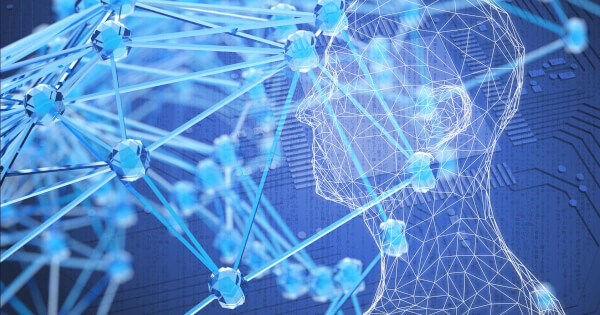UniPi’s innovative AI approach combines text-guided video generation with policy-making, enabling broad applications in robotics and AI planning.
Researchers from prestigious institutions, including MIT, Google DeepMind, UC Berkeley, and Georgia Tech, have made groundbreaking strides in artificial intelligence with a new model dubbed UniPi. This novel approach leverages text-guided video generation to create universal policies that promise to enhance decision-making capabilities across a breadth of tasks and environments.
The UniPi model emerged from the 37th Conference on Neural Information Processing Systems (NeurIPS 2023), making waves with its potential to revolutionize how AI agents interpret and interact with their surroundings. This innovative method formulates the decision-making problem as a text-conditioned video generation task, where an AI planner synthesizes future frames to depict planned actions based on a given text-encoded goal. The implications of this technology stretch far and wide, potentially impacting robotics, automated systems, and AI-based strategic planning.
UniPi’s approach to policy generation provides several advantages, including combinatorial generalization, where the AI can rearrange objects into new, unseen combinations based on language descriptions. This is a significant leap forward in multi-task learning and long-horizon planning, enabling the AI to learn from a variety of tasks and generalize its knowledge to new ones without the need for additional fine-tuning.
One of the key components of UniPi’s success is its use of pretrained language embeddings, which, when combined with the plethora of videos available on the internet, allows for an unprecedented transfer of knowledge. This process facilitates the prediction of highly realistic video plans, a crucial step toward the practical application of AI agents in real-world scenarios.
The UniPi model has been rigorously tested in environments that require a high degree of combinatorial generalization and adaptability. In simulated environments, UniPi demonstrated its capability to understand and execute complex tasks specified by textual descriptions, such as arranging blocks in specific patterns or manipulating objects to achieve a goal. These tasks, often challenging for traditional AI models, highlight UniPi’s potential to navigate and manipulate the physical world with a level of proficiency previously unattained.
Moreover, the researchers’ approach to learning generalist agents has direct implications for real-world transfer. By training on an internet-scale pretraining dataset and a smaller real-world robotic dataset, UniPi showcased its ability to generate action plans for robots that closely mimic human behavior. This leap in AI performance suggests that UniPi could soon be at the forefront of robotics, capable of performing nuanced tasks with a degree of finesse akin to human operators.
The impact of UniPi’s research could extend to various sectors, including manufacturing, where robots can learn to handle complex assembly tasks, and service industries, where AI could provide personalized assistance. Furthermore, its ability to learn from diverse environments and tasks makes it a prime candidate for applications in autonomous vehicles and drones, where adaptability and quick learning are paramount.
As the field of AI continues to evolve, the work on UniPi stands as a testament to the power of combining language, vision, and decision-making in machine learning. While challenges such as the slow video diffusion process and adaptation to partially observable environments remain, the future of AI appears brighter with the advent of text-guided video policy generation. UniPi not only pushes the boundaries of what’s possible but also paves the way for AI systems that can truly understand and interact with the world in a human-like manner.
In conclusion, UniPi represents a significant step forward in the development of AI agents capable of generalizing and adapting to a wide array of tasks. As the technology matures, we can expect to see its adoption across various industries, heralding a new era of intelligent automation.
Image source: Shutterstock
Credit: Source link





















 Bitcoin
Bitcoin  Ethereum
Ethereum  XRP
XRP  Tether
Tether  Solana
Solana  USDC
USDC  Dogecoin
Dogecoin  Cardano
Cardano  Lido Staked Ether
Lido Staked Ether  TRON
TRON  Chainlink
Chainlink  Wrapped Bitcoin
Wrapped Bitcoin  Avalanche
Avalanche  Wrapped stETH
Wrapped stETH  Stellar
Stellar  Sui
Sui  Toncoin
Toncoin  Hedera
Hedera  Shiba Inu
Shiba Inu  WETH
WETH  LEO Token
LEO Token  Polkadot
Polkadot  Litecoin
Litecoin  Bitget Token
Bitget Token  Bitcoin Cash
Bitcoin Cash  Hyperliquid
Hyperliquid  USDS
USDS  Uniswap
Uniswap  Wrapped eETH
Wrapped eETH  Ethena USDe
Ethena USDe  Pepe
Pepe  MANTRA
MANTRA  NEAR Protocol
NEAR Protocol  Aave
Aave  Monero
Monero  Ondo
Ondo  Official Trump
Official Trump  WhiteBIT Coin
WhiteBIT Coin  Internet Computer
Internet Computer  Aptos
Aptos  Mantle
Mantle  Ethereum Classic
Ethereum Classic  Dai
Dai  Cronos
Cronos  Bittensor
Bittensor  POL (ex-MATIC)
POL (ex-MATIC)  OKB
OKB 
